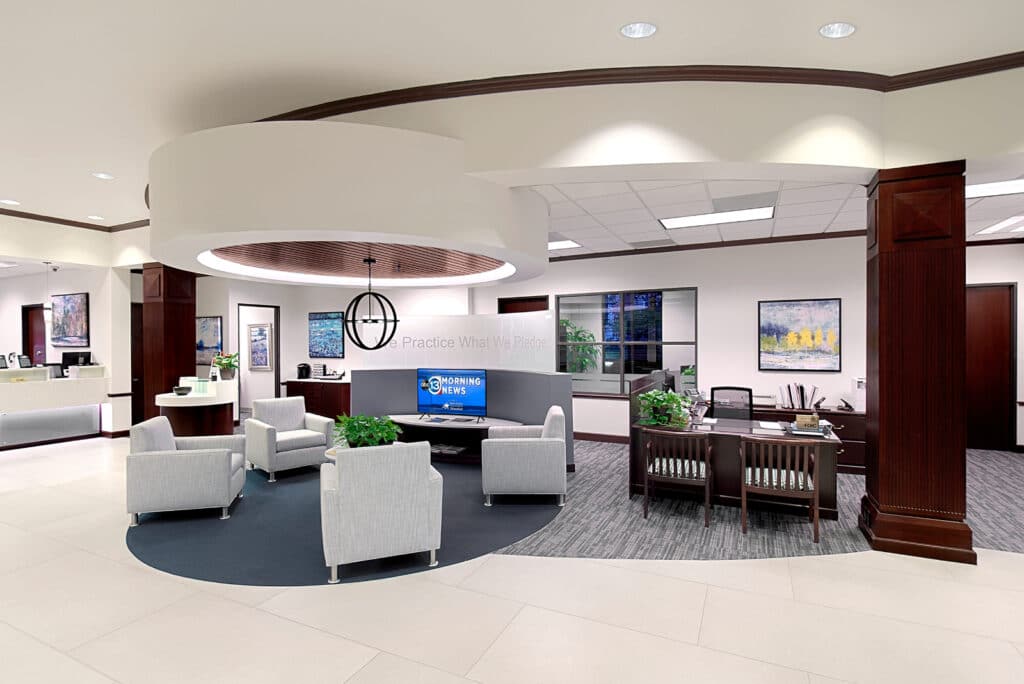Selecting the right building material is a critical decision in architectural design. Each material has its own set of advantages and disadvantages that can significantly impact the final outcome of a project. In this article, we’ll explore the pros and cons of some common building materials, helping you make informed choices for your architectural build in Houston, Texas. Join us as we delve into the world of building materials and their impact on design and construction.

Brick
Pros:
- Timeless Aesthetic: Brick offers a classic and timeless look that suits a variety of architectural styles.
- Durability: Bricks are known for their longevity and resistance to weathering.
- Thermal Mass: Bricks have excellent thermal mass properties, helping regulate indoor temperatures.
Cons:
- Cost: High-quality bricks can be expensive, impacting the project’s budget.
- Weight: Brick buildings are heavy, requiring strong foundations and structural support.
- Maintenance: Mortar joints may require periodic maintenance and repointing.
Concrete
Pros:
- Versatility: Concrete can be molded into various shapes and used for a wide range of architectural styles.
- Strength: Concrete structures are exceptionally strong and durable.
- Fire Resistance: Concrete offers excellent fire resistance.
Cons:
- Environmental Impact: Producing cement, a key component of concrete, has a high carbon footprint.
- Cracking: Concrete can crack over time, requiring maintenance.
- Aesthetic Limitations: Concrete’s gray appearance may not suit all design aesthetics.
Steel
Pros:
- Strength: Steel is incredibly strong, allowing for open and expansive architectural designs.
- Flexibility: Steel can be molded and shaped to create intricate structures.
- Speed of Construction: Steel-framed buildings can be constructed quickly.
Cons:
- Cost: High-quality steel can be expensive, impacting project budgets.
- Corrosion: Steel can corrode if not properly protected, leading to maintenance issues.
- Thermal Conductivity: Steel conducts heat, potentially affecting energy efficiency.
Wood
Pros:
- Sustainability: Wood is a renewable resource, making it an environmentally friendly choice.
- Aesthetic Appeal: Wood’s natural warmth and beauty are highly desirable in many architectural styles.
- Insulation: Wood offers good insulation properties.
Cons:
- Durability: Wood is susceptible to rot, insects, and decay without proper treatment.
- Maintenance: Wooden structures may require regular maintenance to preserve their appearance and integrity.
- Fire Risk: Wood is flammable, which can pose safety concerns.
Glass
Pros:
- Transparency: Glass allows for abundant natural light and stunning views.
- Aesthetics: Glass can create modern, sleek, and visually appealing designs.
- Energy Efficiency: High-performance glass options offer good insulation and energy efficiency.
Cons:
- Cost: High-quality, energy-efficient glass can be expensive.
- Privacy: Large expanses of glass may raise privacy concerns.
- Heat Gain: Excessive sunlight can lead to heat gain and glare without proper shading.
Selecting the Right Material
Choosing the right building material depends on the specific needs of your architectural project in Houston, Texas. Consider factors like budget, design aesthetics, environmental impact, and maintenance requirements when making your decision. At Dwight Patterson Architecture, we work closely with clients to select materials that align with their vision and project goals, ensuring a successful architectural outcome.
SEO Keywords:
- Pros and cons of building materials
- Choosing the right building material
- Building material considerations in architecture
- Common construction materials in Houston
- Houston architectural material selection
Meta Description: Explore the pros and cons of common building materials in architectural design, helping you make informed choices for your Houston, Texas project. Discover the advantages and disadvantages of brick, concrete, steel, wood, and glass, considering factors like cost, durability, aesthetics, and sustainability. Learn how Dwight Patterson Architecture collaborates with clients to select materials that align with their vision and project goals, ensuring a successful architectural outcome.
